Introduction
Amritsar is a famous city in Punjab that attracts thousands of tourists every day. It’s also known as the heart of the Sikhs. This holy city was founded in 1577 A.D. by the 4th guru, Sri Guru Ramdas Ji. Amritsar is famous for the presence of Sri Harmandir Sahib, also known as the Golden Temple.
Amritsar has a significant history of events and wars from the 15th to the 20th century. The city faced many challenges from different rulers during that time. The Golden Temple, too, played a part in these historical events, facing destruction along with the city. Many innocent people were also affected by these events.
In this blog post, we’ll explore the entire history of Amritsar, unfolding its ancient period as one of the first discoverable cities of that era. We will also cover the wars that took place here and shaped its past.
History of Amritsar
Ancient Period
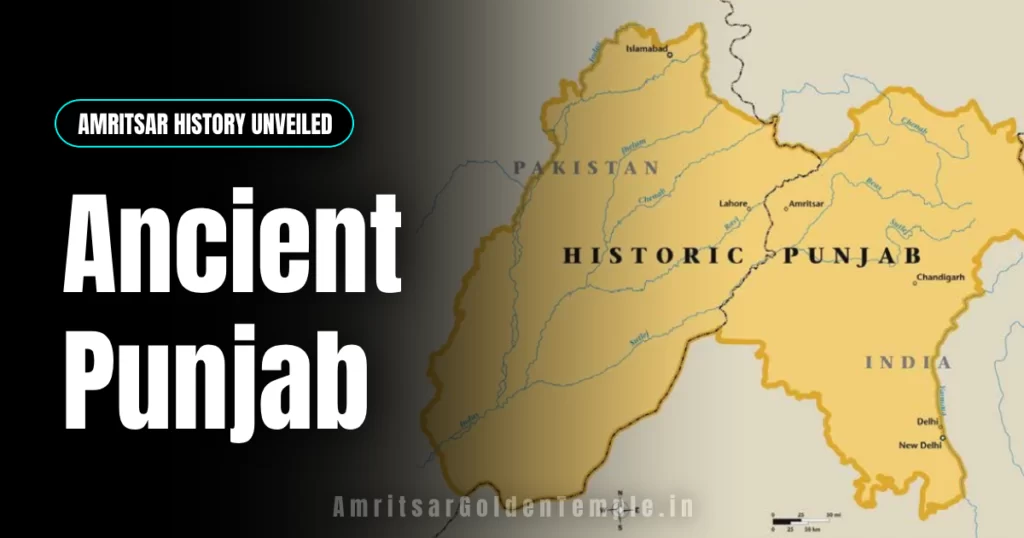
Punjab’s history unfolds through different times. In the Stone Age, early humans lived there. During the Bronze Age, Punjab was a hub of advanced civilizations like the Indus Valley, with a notable city called Harappa. The Iron Age saw the arrival of Indo-Aryan tribes, creating the Vedic civilization and composing important texts like the Rigveda. Amritsar, a city in Punjab, played a key role during invasions, the Maurya Empire, and the blending of Greek and Indian cultures. The medieval period had various rulers, including the Shahis and Ghaznavids, until Babur started the Mughal Empire in 1526 AD. Throughout, different leaders, cultural mixes, and occasional conflicts shaped Punjab’s unique history.
15th century: Foundation Period of Sikhism & Amritsar
Foundation of Sikhism
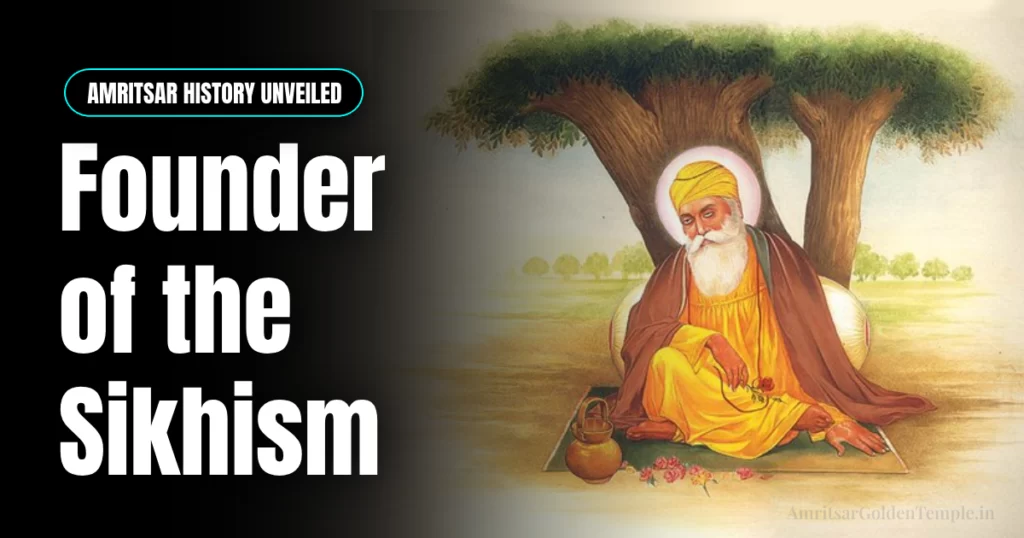
Guru Nanak Dev Ji laid the foundation of ‘Sikhism’ in the 15th century. According to sikh sources, Guru Nanak Dev Ji also visited Amritsar at the place of Sri Harmandir Sahib during his travels. At that time the Harmandir Sahib was not constructed just a tree where today famous with the name of Dukh Bhanjani Beri and a small lake is present. It is believed that Guru Nanak Dev Ji spent time meditating under this tree.
Foundation of Amritsar
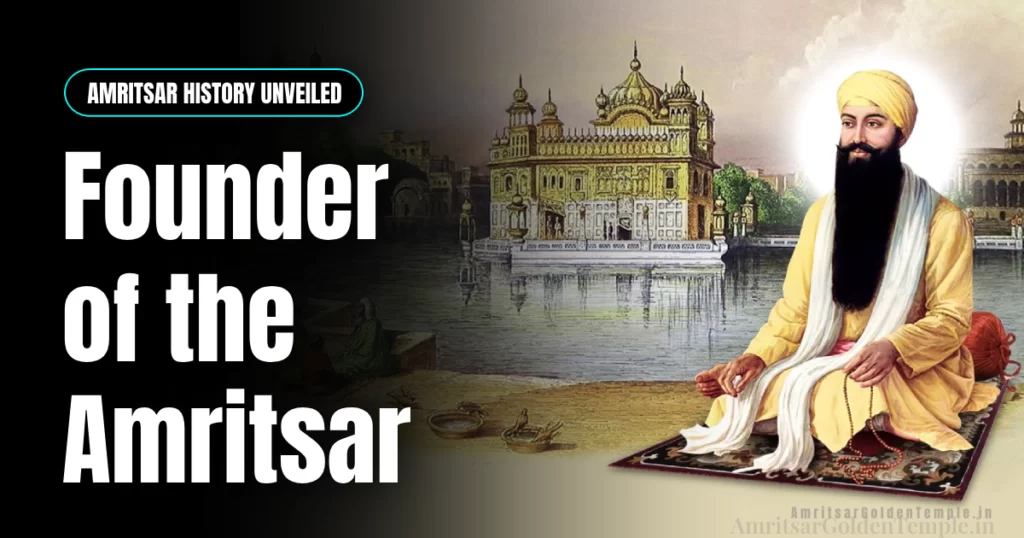
In the 15th century, Punjab including Amritsar was conquered by Sher Shah Suri (an Afghan ruler) after defeating Kamran. In 1577, the 4th Sikh guru, Sri Guru Ramdas Ji, established Amritsar. Before the city was founded, the area was covered with thick forests and had several lakes. There are two stories exist Regarding the land Guru Ram Das Ji acquired for the site:
- Based on a Gazetteer record; the land of Amritsar was purchased with sikh donations of 700 Rupees from the residents of the neighbouring villages Gumtala and Tung during the time of Guru Amar Dass ji (1479-1574)
- According to some other sources, This land was a gift from the Mughal Emperor Akbar to Guru Amar Das’s daughter Bibi Bhani Ji. Bibi Bhani ji was later married to Guru Ram Das ji.
Guru Ramdas ji inaugurated the excavation of the sacred tank (Amrit-Sarovar) with the help of Baba Buddha ji (not to be confused with the Buddha of Buddhism) from which the city got its present name. The settlement that grew up around the holy Sarovar (Sarovar) was initially called Ramdaspur, Chak Ramdas, or simply Chak Guru. Guru Ramdas ji encouraged many people and invited 52 traders from different occupations and professions belonging to different cities like Patti and Kasur to start their businesses and settle here in the city. These families started the first 32 shops in the city which still stand in the street called Batisi Hatta (32 shops).
In 1581, The city then expanded further by his son and the 5th Sikh Guru, Guru Arjan Dev Ji, who completed and lined the tank and built the Harmandir in its midst, now popularly known as the Harimandar Sahib or Golden Temple. Guru Arjan Dev ji excavated and constructed two more Sarovar Santokhsar and Ramsar nearby.
On the banks of Ramsar, the fifth Guru, Guru Arjan Dev ji, undertook the compilation of the Adi Granth (later Guru Granth Sahib). This holy compilation of Guru Granth Sahib ji was later placed in Harmandir Sahib on August 16, 1604. He appointed Baba Buddha ji as the first Granthi. Consequently, the shrine and the surroundings of Amritsar Sarovar emerged as the focal point of the city, attracting people from near and far, especially Sikhs. who came here for pilgrimage. Over time, the city came to be known as “Amritsar”.
Rise of Sikhism (16th century)
1. Guru Arjan Dev ji’s Shaheedi
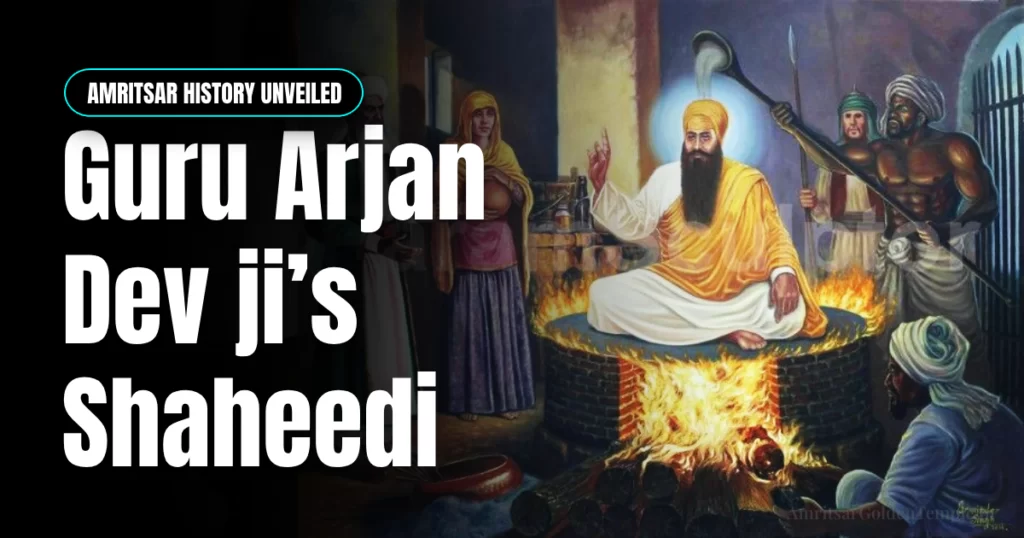
In the early 16th century, Guru Arjan Dev compiled the Adi Granth, the primary holy book of Sikhism. At the same time, after Akbar died in Agra on 17 October 1605, his son Salim became the emperor, known as Jahangir. Sikhism was flourishing day by day, due to which the Mughals were getting worried. Guru Arjan Dev Ji’s brother, Prithi Chand, and other political figures decided to escalate tensions due to their disagreement with Guru Arjan Dev Ji.
Jahangir issued the order for Guru Arjan Dev Ji’s arrest on 15 May 1606, merely seven months after his coronation. Guru Arjan Dev ji was imprisoned in the fort of Lahore, where he was tortured and martyred on 30 May 1606. Guru Arjan Dev Ji thus became the first martyr of Sikhs.
2. Formation of Akaal Takhat Sahib

After Guru Arjan Dev Ji was martyred, Guru Hargobind became the 6th Sikh Guru at the age of eleven. Guru Hargobind ji maintained both spiritual and military components and adopted two swords, symbolized by the concept of “Mirī-Pīrī”. Guru Hargobind Ji initiated a military tradition to protect the Sikh community due to the persecution faced by his father and also to protect ourselves. Alongside militarization, Guru Hargobind Ji constructed a 14-foot-long, 8-foot-wide, and 7-foot-high slab with the name of the Akaal Takhat Sahib, a symbol of Sikh political power. A place of justice and consideration of temporal issues, which is also against Jahangir’s order, leading to tensions.
3. Battle of Amritsar 1634
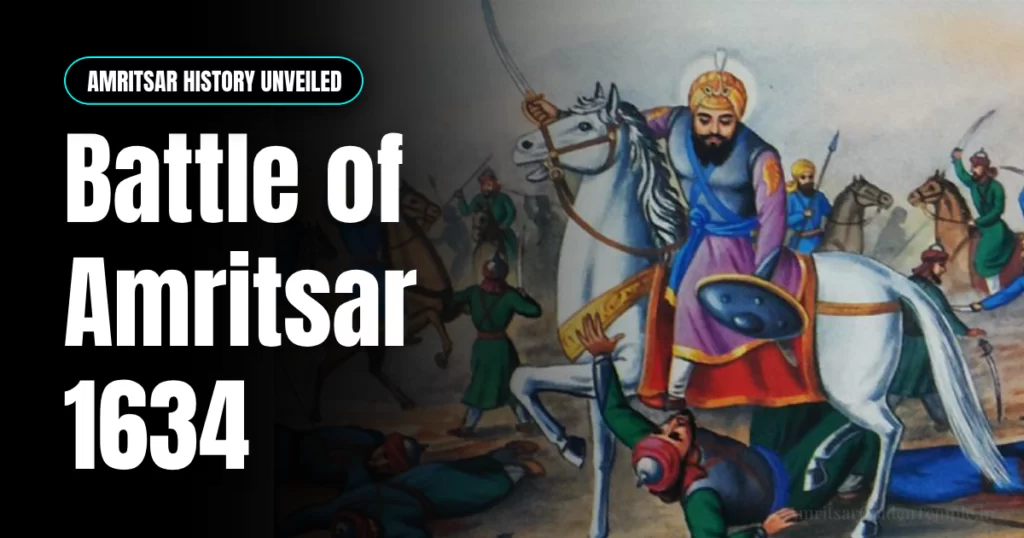
In the year 1628, Shah Jahan was hunting near Amritsar and a group of Sikhs also went hunting on the other side. During the hunt, the Sikhs accidentally capture Shah Jahan’s hawk. When Shah Jahan’s hunters asked for their hawk back, the Sikhs refused.
The hunters informed Shah Jahan that if the Sikhs laid their hands on the hawk today, tomorrow they might lay hands on the crown itself. On the order of Shah Jahan, an army was sent under the command of Mukhlis Khan. On the other hand, Guru Ji was not ready for war because his daughter’s marriage was being planned. When news of the approach of the Mughal forces reached the Guru, he immediately decided to face the royal army.
The Battle of Amritsar was fought in 1628 at Amritsar near the present-day Khalsa College. This battle continued for three days. Although the Mughal army was superior, the Sikhs fought bravely under the leadership of Guru Hargobind Sahib. Seeing no end to this war, Mukhlis Khan called the Satgurs for battle. Guru Hargobind Sahib Ji gave Mukhlis Khan the first chance but his attempt failed. Then Guruji defeated Mukhlish Khan for the first time with his sword. After his death, the rest of the Mughal army was destroyed and the Sikhs won the battle. Bhai Bidhi Chand, Pandey Khan and other Bahadur Singhs showed good hands in this war. This battle was the first major battle between the Mughals and the Sikhs. Guru Hargobind Sahib went to Jhabal to perform the marriage ceremony of Bibi Viro ji while thanking the Akal Purakh.
17th Century: Amritsar’s Tough Times and Sikh Revival

In the mid-17th century, Amritsar had some tough times because of clashes with the Mughal Empire. Both the city and the Harmandir Sahib were seriously damaged several times, but the Sikhs always protected them and rebuilt them.
In the late 17th century, Guru Tegh Bahadur, the ninth Sikh Guru, took charge and brought back the spiritual and cultural life of Amritsar. He set up many gurdwaras in the city and played a big part in defending the freedom of religion for everyone. Thanks to his efforts, Amritsar became an important place for Sikh heritage and spirituality.
18th Century: Maharaja Ranjit Singh & British Takeover
1. Rise of Maharaja Ranjit Singh
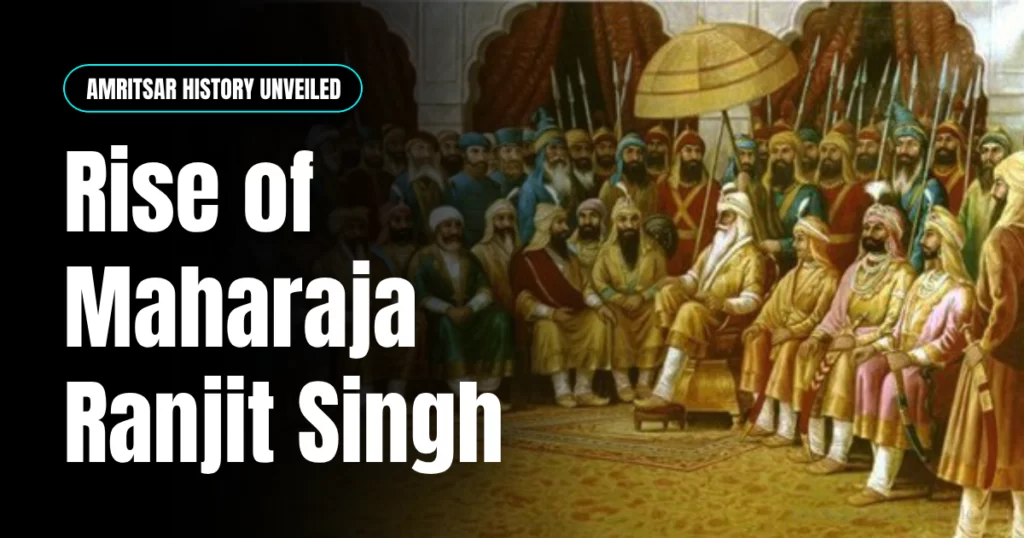
Ranjit Singh, also known as Sher-e-Punjab or the “Lion of Punjab,” was the first Maharaja of the Sikh Empire, ruling over the northwest Indian subcontinent (present-day Pakistan and parts of northern India).
In 1802, at the age of 22, Ranjit Singh took control of Amritsar from the Bhangi Misl. During his reign, Amritsar prospered, and he played a pivotal role in enhancing the Golden Temple’s magnificence. The temple’s dome was adorned with gold leaf, and Ranjit Singh generously gifted unique items, including a handmade sundial, to the Golden Temple.
Under Ranjit Singh’s leadership, the Sikh Empire expanded significantly, covering a large area in the northwest of India and reaching its pinnacle.
In 1822, Maharaja Ranjit Singh fortified the city by erecting a protective wall around it. Within the walled city, distinctively planned areas known as Katras were established. These four Katras functioned as unique neighbourhoods with their methods of safeguarding the city during attacks. Maharaja Ranjit Singh created the Ram Bagh garden and built a summer palace. On the right side of the Golden Temple, he erected a beautiful pink temple, later demolished by the British. Subsequently, Sher Singh continued the city wall’s construction and added twelve gates to enhance its security further.
2. Annexation of the Punjab by Britishers

In the late 18th century, after the death of Maharaja Ranjit Singh on June 27, 1839, the Sikh Empire faced numerous internal conflicts and power struggles among different factions. The subsequent period witnessed increased interference from external forces, particularly the British East India Company.
On the other side of India, many regions were already under British rule. However, due to a treaty between Maharaja Ranjit Singh and the British, Ranjit Singh agreed not to interfere in cities where the Britishers were ruling, and vice versa. However, when Ranjit Singh died in 1839, almost the entire Indian subcontinent was under British domination, except for the Punjab. To delve into the story behind how Punjab was annexed by the British, click here.
The annexation of Punjab by the British had profound effects on the people of Amritsar and Punjab. Numerous conflicts occurred, leading to wars and unfortunate historical events that persisted until 1947.
3. Infrastructure Reconstruction and Demolition

During British rule, the British constructed many buildings and streets while also destroying some of the most valuable historical infrastructure. Many of the modern infrastructure and streets in Amritsar are named after the British Empire. Famous streets, roads, and places bear names like Lawrence Road, Hall Bazar, and more.
An unseen historical building, Maharaja Ranjit Singh’s Pink Palace, is also missing. This palace was once part of the Golden Temple complex and appeared in photographs and paintings from the mid-18th century. A watercolour painting titled ‘Tank & Marble Causeway the Sikh Temple Amritsar,’ created in February 1854 by William Carpenter, depicts this building. The British later demolished it, replacing it with a clock tower, visible in an 1860s photo of the Golden Temple during the colonial British era, with the under-construction Gothic clock tower (later demolished) on the extreme right side.
Before British annexation, Amritsar was an old walled city with 12 gates. However, many of these gates were demolished by the British; nowadays, only a few remain. In 1866, the British constructed a 13th gate in Amritsar, named Hall Gate.

19th Century: Jallianwala Bagh, Punjab Partition, Amritsar Massacre 1978, Operation Blue Star 1984
1. Jallianwala Bagh massacre (1919)

Jallianwala Bagh witnessed a tragic incident that profoundly impacted the nation. This event occurred in Amritsar, Punjab, on the day of Baisakhi, April 13, 1919. The massacre took place during British rule when a group of unarmed civilians gathered at Jallianwala Bagh for a peaceful protest against the Rowlatt Act. Upon learning of the protesters, British Brigadier General Reginald Dyer ordered his troops to open fire on the crowd.
To ensure there was no escape, General Dyer blocked all exits of the garden and approached the crowd from the back with the army. The troops, following his orders, opened fire, resulting in the loss of hundreds of innocent lives and leaving many more injured. With no clear exit points, some sought refuge wherever they could, and in the chaos, some individuals jumped into a well, a fact later discovered by researchers.
While the exact number of casualties remains uncertain, it is estimated that hundreds were killed, and over a thousand were injured. This brutal incident sparked widespread anger and resentment against British rule in India, significantly contributing to the struggle for independence. Today, visitors can explore Jallianwala Bagh, where historical markers, the garden itself, the site where the troops stood, and even the well, all bear witness to this tragic event that continues to resonate after many years.
2. Partition and Amritsar
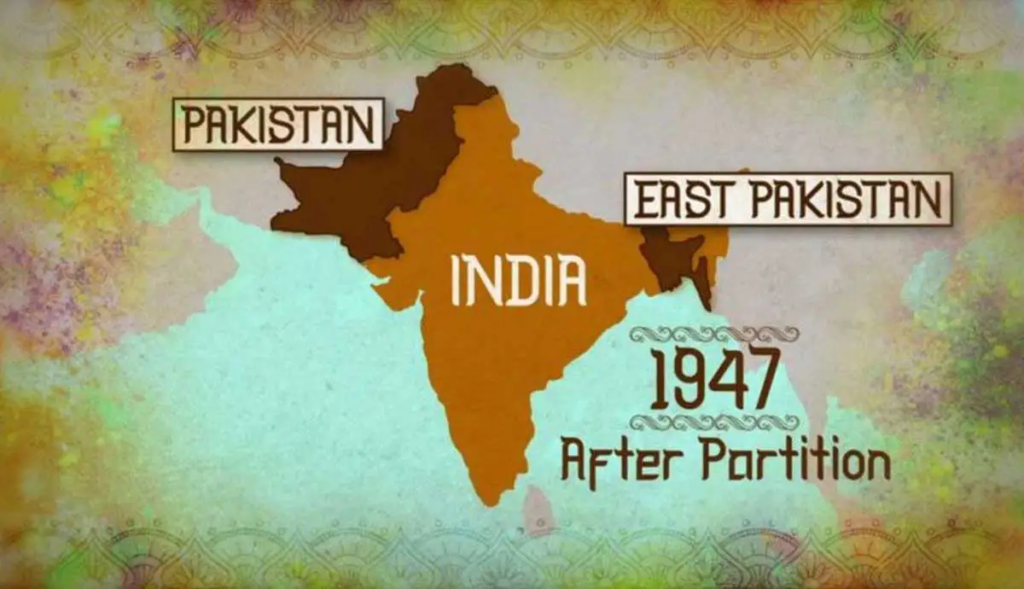
In 1947, India underwent a significant geopolitical shift, leading to the partition into India, Pakistan, and Bengal on August 14. This partition, driven by the demand for a separate Muslim nation, resulted in widespread violence, mass migrations, and considerable loss of life. The decision, formally approved on July 18, 1947, met with resistance from leaders such as Mahatma Gandhi, although it was accepted by Congress leaders in June. Before this, British colonial policies had strategically utilized religious divisions and fabricated narratives to sow discord, ultimately contributing to the call for a separate Muslim nation.
The official announcement of partition on August 14 triggered a hurried exodus of people from all religious communities, causing disorder and significant casualties during the absence of proper governance amid the British departure. This historical event left an enduring impact on South Asia, reshaping the political, societal, and cultural landscape of India and Pakistan while also creating enduring tensions between the two nations. Even today, the emotional ramifications of the 1947 partition continue to influence the diplomatic and cultural dynamics of the region.
3. Amritsar Massacre 1978

In 1978, on April 13th, the Akhand Kirtani Jatha gathered in Amritsar for their annual Vaisakhi Samagam. During the event, news arrived that Nirankari followers were insulting Guru Granth Sahib Ji and the Sikh religion in a procession. Bhai Fauja Singh, upon hearing this, addressed the congregation, drawing a line and asking those willing to accept martyrdom to cross it. Despite attempts to deter women and children, many insisted on going.
The Gursikhs proceeded towards the gathering but were stopped by the police, who initially promised intervention but later returned with more officers. A sudden, armed attack by thousands of Nirankaris resulted in a brutal massacre. Bhai Fauja Singh, though wounded, continued chanting “Waheguru.” Hindered by the police, he eventually attained martyrdom.
Eyewitnesses noted the administration allowing the culprits to escape, and the government’s handling, along with media misrepresentation, added to the injustice. The incident, known as the Amritsar Massacre, ignited a quest for justice in the Sikh community, emphasizing the need for accountability in the face of religious provocation. The Khalsa Panth commemorates the 13 Shaheeds and their sacrifices as a commitment to justice and the defence of Sikh principles.
In this bloody massacre, 13 Singhs were martyred, and more than 70 were wounded. Many of them left behind wives and children. The names of the 13 Shaheed Singhs are
- Bhai Fauja Singh s/o Surain Singh, Amritsar
- Bhai Avtar Singh s/o Bhagwan Singh Kuda Kurala, Hoshiarpur
- Bhai Harbhajan Singh s/o Jagat Singh, Bhattian, Gurdaspur
- Bhai Piara Singh s/o Kishan Singh, Bhungrani, Hoshiarpur
- Bhai Raghbir Singh s/o Nawab Singh, Bhagupur, Amritsar
- Bhai Gurcharan Singh s/o Daleep Singh, New Model Town, Ludhiana
- Bhai Gurdial Singh s/o Sohan Singh, Mode, Amritsar
- Bhai Amrik Singh s/o Kundan Singh, Khujala, Amritsar
- Bhai Dharambir Singh s/o Lal Singh, Ajeet Nagar, Amritsar
- Bhai Kewal Singh s/o Amar Singh, Prem Garh, Hoshiarpur
- Bhai Hari Singh s/o Gurcharan Singh, Kot Ralia Ram, Amritsar
- Bhai Ranbir Singh Fauji s/o Kala Singh, Thraj, Faridkot
- Baba Darshan Singh s/o Achhar Singh Ji, Mehtha, Amritsar
On Saturday, April 15, 1978, the funeral of the thirteen martyrs took place outside Gurdwara Ramsar Sahib. A large gathering of about twenty-five to thirty thousand people came together to pay their respects. The martyrs were honoured in a collective ceremony, and their bodies were placed on a single funeral pyre. Together, they were cremated as a symbol of unity and shared sacrifice. Nowadays, where the ceremony happened, a gurdwara has been built with the name of Gurudwara Angeetha Sahib in remembrance of the Vaisakhi 1978 shaheeds.
4. Operation Blue Star 1984

In June 1984, the Indian government deployed around 100,000 troops for Operation Blue Star to apprehend Bhindranwale at the Golden Temple. Despite resistance, the soldiers proceeded, resulting in unfortunate consequences. General Arun Shridhar Vaidya led the operation, leaving a lasting impact and stirring controversy within the Sikh community.
On June 1, 1984, the army began firing machine guns, light machine guns, and rifles at buildings in the Golden Temple Complex. This initial shooting caused the death and injury of many pilgrims. By June 2, the army took control of Amritsar, sealing Punjab’s borders and halting transportation. Pilgrims, however, could still enter the Golden Temple.
On June 3, a large gathering occurred at the Golden Temple due to Gurpurab, but the military imposed a curfew, causing trouble. The army continued its attacks on June 4-5, resulting in significant damage and casualties. By June 6, tank fire was directed at Akaal Takhat, causing heavy damage. The battle concluded with the death of Bhindranwale and his supporters.
Between June 7 and 10, the army entered Akal Takht, discovering many dead bodies. Later, on October 31, 1984, Indira Gandhi was assassinated by Baent Singh and Satwant Singh in revenge for firing on the Golden Temple in Operation Blue Star.
Modern Amritsar

Amritsar is still a vibrant city that attracts pilgrims and tourists from all over the world every single day. Nowadays, many things have changed. The streets are beautifully renovated, and historical buildings are available to visit, allowing people to explore the city’s history. The government has also invested a lot in improving infrastructure to attract more tourists. A famous street has been created outside the Golden Temple, called Heritage Street. This street holds many historical events that happened in the past.
There is no doubt that Amritsar is a complete package that offers a rich blend of historical significance, renowned cuisine, and traditional clothing. Explore our full-detailed guide for a professional and accessible tour of Amritsar, which help you explore Amritsar in a better way.


